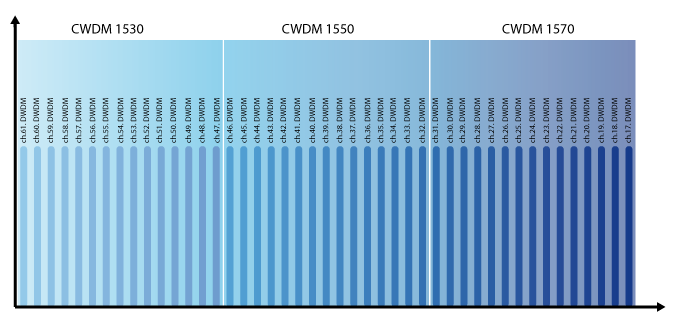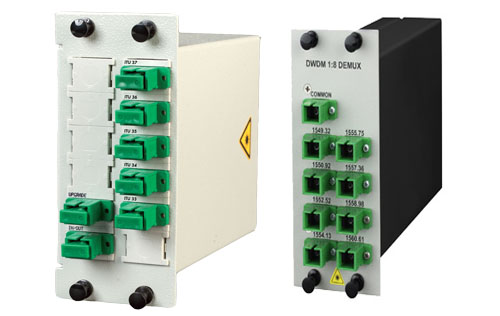In telecommunications and computer networks, multiplexing (muxing) is a method by which multiple analog message signals or digital data streams are combined into one signal over a shared medium. The goal is to share an expensive resource. For instance, in telecommunications, several telephone calls may be carried using one wire.
The multiplexed signal is transmitted over a communication channel, which may be an actual transmission medium. The multiplexing divides the capacity from the high-level communication channel into several low-level logical channels, one for every message signal or data stream to be transferred. A reverse process, known as demultiplexing, can extract the original channels around the receiver side. A tool that performs the multiplexing is known as multiplexer (Mux), along with a device that performs the reverse process is called a demultiplexer (Demux).
In electronics, a multiplexer is really a device that selects one of several analog or digital input signals and forwards the selected input right into a single line. A multiplexer of 2n inputs has n select lines, which are used to select which input line to send towards the output. Multiplexers are mainly used to increase the quantity of data that can be sent within the network within a specific amount of time and bandwidth. A multiplexer can also be called a data selector. An electronic multiplexer makes it possible for several signals to share one device or resource. Conversely, a demultiplexer is a device going for a single input signal deciding on one of several data-output-lines, which is connected to the single input. A multiplexer is often combined with a complementary demultiplexer on the receiving end. A digital multiplexer can be viewed as like a multiple-input, single-output switch, and a demultiplexer like a single-input, multiple-output switch. The schematic symbol for a multiplexer is an isosceles trapezoid with the longer parallel side containing the input pins and also the short parallel side containing the output pin. The schematic around the right shows a 2-to-1 multiplexer on the left and an equivalent switch on the right. The sel wire connects the specified input towards the output.
In the fiber optic area, a WDM system also utilizes a multiplexer in the transmitter to join the signals together, and a demultiplexer in the receiver to separate them apart. WDM systems are divided into different wavelength patterns, CWDM and DWDM. There are different Mux Demux for every of these.
The DWDM equipment, a DWDM multiplexer, actually contains one wavelength converting transponder for every wavelength signal it’ll carry. The wavelength converting transponders get the input optical signal, convert that signal into the electrical domain, and retransmit the signal utilizing a 1550 nm band laser. Additionally, it contains an optical multiplexer, which takes the different 1550 nm band signals and places them onto a single fiber. And also the DWDM demultiplexer breaks the multi-wavelength signal back into individual signals and outputs them on separate fibers for client-layer systems to detect. DWDM Mux and DWDM Demux are designed to multiplex DWDM channels into one or two fibers. The most popular configuration is 4, 8, 16 and 32 channels. The DWDM modules passively multiplex the optical signal outputs from 4 or more electronic devices, send on them a single optical fiber and then de-multiplex the signals into separate, distinct signals for input into electronics in the opposite end from the fiber optic link.
At the same time frame, there are CWDM multiplexer demultiplexer (CWDM Mux and CWDM Demux). They’re made to multiplex multiple CWDM channels into a couple of fibers. The core of CWDM Module application may be the passive Mux/Demux unit. The most popular configuration is 4, 8, and 16 channels. Optional wide band port for existing 1310nm or 1550nm port is available to multiplex with these CWDM Channels. Along with the CWDM transceiver series or the wavelength converter series, the bandwidth of the fiber may be used in a economical way.






